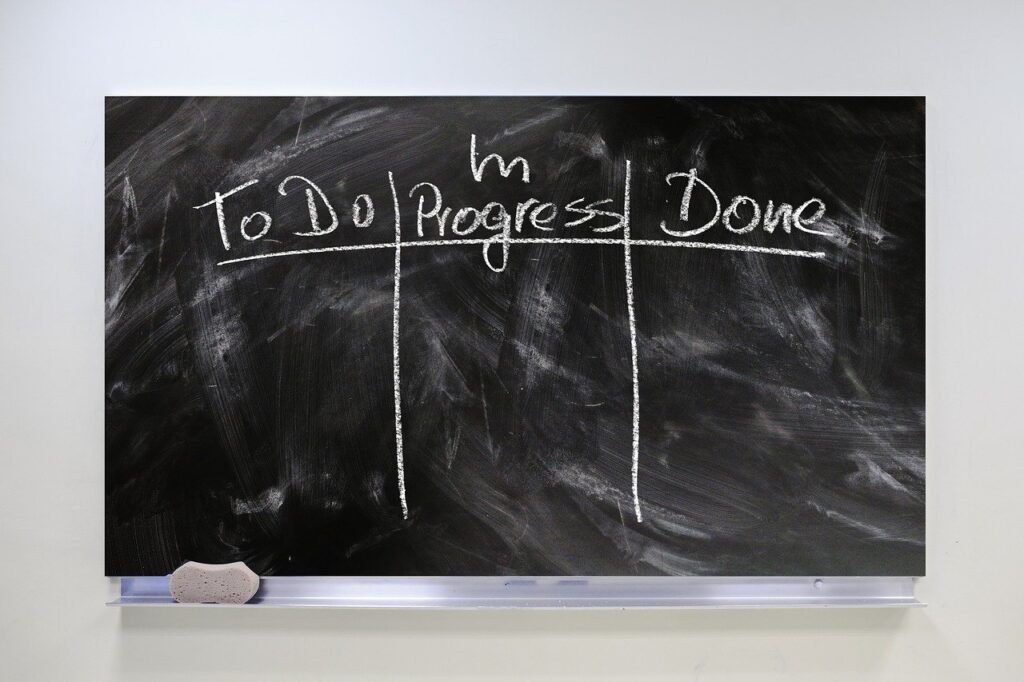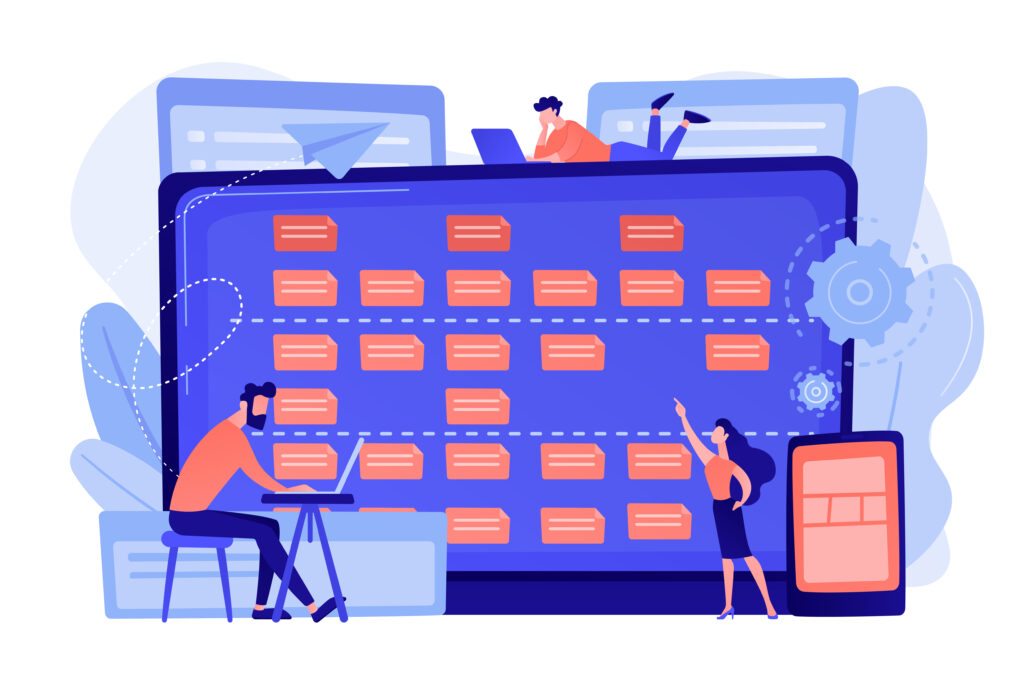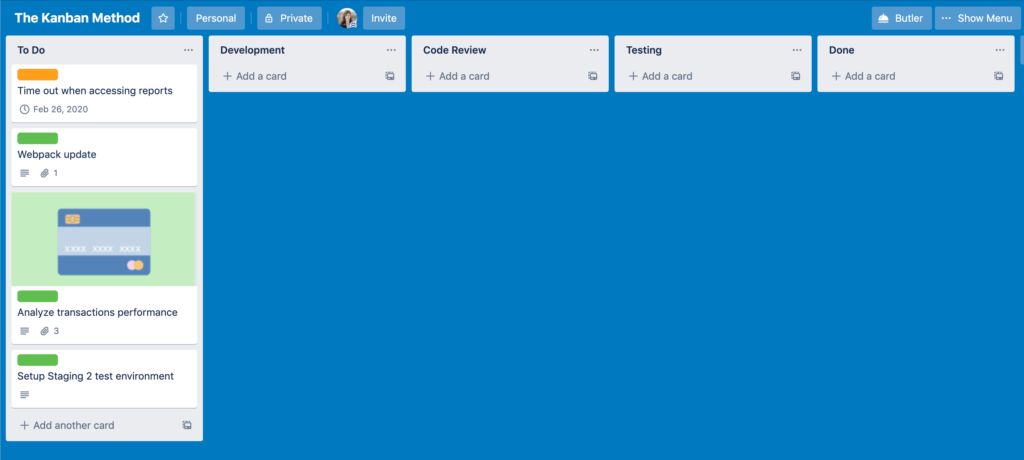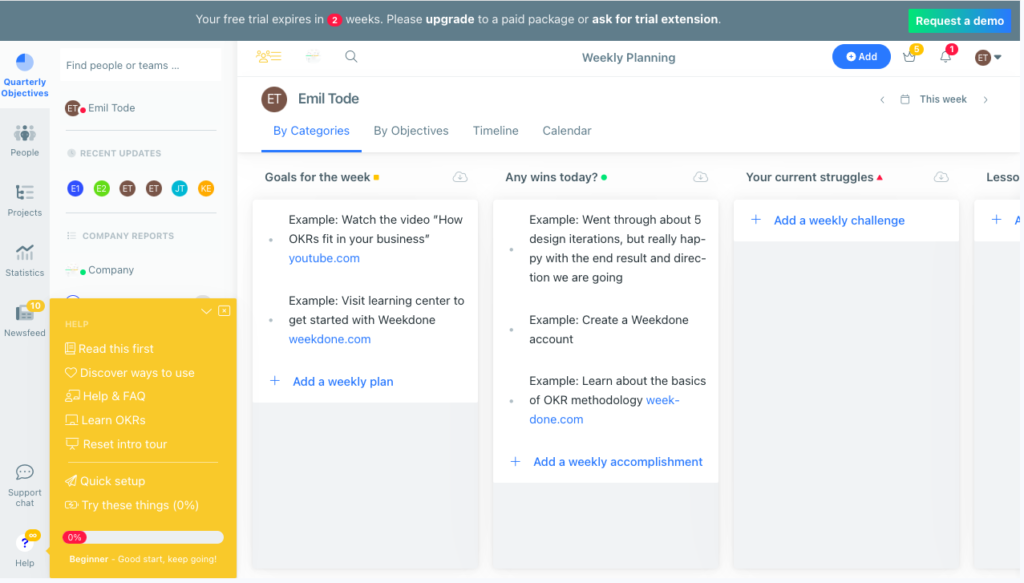Are you struggling to manage your team’s tasks and projects effectively? Look no further than a Kanban board. This powerful, visual tool can help you streamline processes, boost productivity, and foster continuous improvement. Let’s dive into the world of Kanban boards and learn how to harness its potential for your team’s success.
Kanban Board Historical Origin

The Kanban method originated from Toyota’s production system in the 1950s, aiming to organize factory floors and maintain consistent quality in the manufacturing process. Kanban, a combination of the Japanese words for “sign” and “board,” has since evolved into a widely-used project management tool, known as the kanban process or kanban system.
Modern Kanban boards, stemming from their original use on factory floors, are now versatile management tools used across diverse industries.
Elements of a Kanban Board

Kanban boards, comprising visual signals, columns, and work-in-progress (WIP) limits, aid teams in visualizing their workflow, allocating resources, and enhancing efficiency.
The basic kanban board structure, which the kanban board represents as tasks organized into kanban cards and columns, provides team members a clear visual display of their work, simplifying the identification of bottlenecks and improvement areas.
Physical vs. Digital Kanban Boards

While physical Kanban boards, often using sticky notes, offer tangible benefits for team communication and collaboration, digital Kanban boards provide the advantage of remote team management and software integrations.
In this article, we shall examine the distinct benefits of both forms of types of kanban boards.
Benefits of Physical Boards
Physical kanban boards can enhance team communication and collaboration by providing a shared, visible workspace. For example, Optimizely used a massive physical Kanban board, dubbed the “wall of work,” to provide a comprehensive overview of each engineering project, generating discourse regarding their workflows.
Physical boards also offer psychological benefits like enhanced focus, motivation, and engagement.
Advantages of Digital Boards
Digital Kanban boards offer the following benefits:
- Ability to manage remote teams
- Integration with communication channels, time tracking tools, and document management systems
- Real-time tracking and reporting
- Convenience and accessibility compared to physical boards.
Kanban Guide for Different Industries

Kanban boards can be beneficial for a wide range of industries, including:
- Software development
- Construction
- Manufacturing
- Marketing
- Healthcare
- Education
By effectively visualizing workflows, tracking progress, and identifying potential bottlenecks, these versatile tools can optimize project management and drive efficiency across various sectors.
Software Development Teams
Kanban boards are widely adopted in software development to execute agile and DevOps methodologies, facilitating instantaneous communication of capacity and complete visibility of workflow. By visually representing project progress, Kanban boards enable project managers to gain insights into team performance and facilitate problem-solving in software development processes.
Non-Software Industries
In non-software industries, Kanban boards can be utilized to reduce waste, enhance production process efficiency, and provide an overview of the status of each job. For example, construction companies use Kanban boards to track RFIs, submittals, and manage the status of documents, while manufacturing industries benefit from improved flexibility, decreased waste, and increased output.
Enhancing Team Collaboration with a Kanban Board

Kanban boards can significantly improve team collaboration by:
- Assigning tasks
- Managing remote teams
- Providing a visual overview of the entire project or workflow
- Allowing team members to easily identify their responsibilities
- Tracking progress
- Facilitating effective communication among team members
Assigning Tasks and Responsibilities
Kanban boards facilitate assigning tasks and responsibilities by enabling project managers to allocate work to specific team members and monitor their progress. By visualizing tasks and tracking their progression through various stages, teams can optimize productivity and ensure that everyone stays on track.
Remote Team Management
Digital Kanban boards, also known as digital kanban board, provide remote teams with enhanced visibility into the work being done by centralizing tasks and minimizing the number of tasks in progress simultaneously.
Benefits of using digital Kanban boards for remote teams include:
- Real-time updates
- Collaboration tools
- Improved organization
- Smooth project management
- Effective communication
By utilizing digital Kanban boards, kanban teams, especially remote ones, can stay connected and organized, ensuring efficient workflow and successful project completion for every team member.
How to Effectively Use a Kanban Board
Effective utilization of a Kanban board requires managing work-in-progress limits and adapting to evolving priorities. Concentrating on these two aspects aids in optimizing team workflow, enhancing productivity, and promoting continuous improvement.
Managing Work-in-Progress Limits
Setting work-in-progress (WIP) limits on a Kanban board helps increase throughput and prevent bottlenecks. By capping the number of tasks your team can actively work on at any given time, you’ll encourage a smooth workflow, eliminate waste, and ensure quality work is delivered on time.
Adapting to Changing Priorities
Kanban boards enable teams to adapt to shifting priorities by providing a visual representation of the workflow and allowing team members to adjust task priority as necessary. With the kanban board explained, this flexibility ensures that your team can respond to varying demands, maintain efficiency, and stay on track to meet project goals.
Integrating Kanban with Other Project Management Methodologies

The Kanban methodology can be effortlessly combined with other project management methodologies like Scrum, thus improving project management processes. By combining the strengths of different methodologies, teams can create a customized approach that is tailored to their specific needs and workflows.
Kanban and Scrum: Complementary Approaches
Kanban and Scrum can be used together to improve project management processes by providing a balance between structure and flexibility. By utilizing a Scrum board for sprint planning and a Kanban board for visualizing and managing tasks within the sprint, teams can benefit from the structure of Scrum and the visual management of Kanban.
Tailoring Your Approach
Developing a customized project management strategy by integrating Kanban with other methodologies assists teams in enhancing their workflows and striking a balance between discipline and adaptability. This hybrid approach ensures that teams can balance their workload, respond to changing priorities, and maximize efficiency.
Tips for Personalizing a Kanban Board
Personalizing your Kanban board is key to improving efficiency and promoting continuous improvement. Tailoring your board to fit your team’s specific workflow and preferences enables you to optimize productivity and guarantee seamless project management.
Customizing Your Board
Tailoring your Kanban board to your team’s needs can be achieved through column customization, card customization, and board layout customization. Adding custom fields, such as text, numbers, and dropdown options, can also help streamline your workflow and make your board more versatile.
Continuous Improvement
Kanban boards can foster continuous improvement through an experimental approach, identifying problems, and implementing gradual modifications to enhance performance.
By periodically reviewing and refining your board, you’ll be able to identify areas for improvement and implement changes as needed.
How to Get Started?
➡️ Download our free Kanban board template
If you’re interested in using Kanban boards for personal projects, free tools such as Trello are worth considering. These platforms provide an easy way to implement a Kanban board and begin streamlining your workflow. For efficient project and progress management on a team level, you may want to look into tools like Weekdone – in addition to using Kanban for task management, they include features for goal management and employee engagement. These additional features aid Kanban usage in companies and teams because oftentimes, just having a simple board is not enough for an organization.
Free Trello Kanban Board

Trello’s free Kanban board provides unlimited cards, lists, and the functionality to assign due dates and assignees to cards. You can easily create a new board, customize it to suit your process, and start organizing your tasks with this user-friendly tool.
Kanban for Teams and Organizations in Weekdone

Weekdone serves as another good alternative for incorporating Kanban boards into your team management process. It provides various features such as goal-setting, weekly planning, and reporting, making it a versatile tool for managing your team’s projects and tasks.
Summary
In conclusion, Kanban boards are a powerful project management tool that can help your team visualize tasks, optimize workflows, and drive continuous improvement. Whether you choose a physical or digital board, the key is to personalize it to suit your team’s unique needs and integrate it with other methodologies for maximum efficiency. Start implementing a Kanban board today and experience the benefits of streamlined project management.
Frequently Asked Questions
What are the 6 rules of Kanban?
The Six Rules of Kanban, as defined by Toyota, are: visualize workflow, limit work in progress, manage flow, make process policies explicit, use feedback loops, and improve collaboratively. These rules provide the structure and tools necessary for successful project management.
What are the 3 elements of Kanban board?
Kanban boards are comprised of three essential elements: boards, lists, and cards. These elements provide the workflow with To Do, In Progress, and Done columns to help teams manage their tasks effectively and efficiently.
Are Kanban boards worth it?
Kanban boards offer a visually organized way to manage work, save time, stay focused and get more done. They are definitely worth it for their many benefits.
What industries can benefit from using Kanban boards?
Kanban boards can be incredibly beneficial for a variety of industries, from software development to construction, providing visibility into workflow and helping to optimize productivity.
How can I customize my Kanban board?
You can customize your Kanban board by customizing columns, cards, and board layout, and by adding custom fields such as text, numbers, and dropdown options.